Hi all! This is Uri, on Guerrilla Poker with two hands of the top high-stakes players. I'm trying to understand what happened to them. This is a good opportunity to learn something. So let's get started.
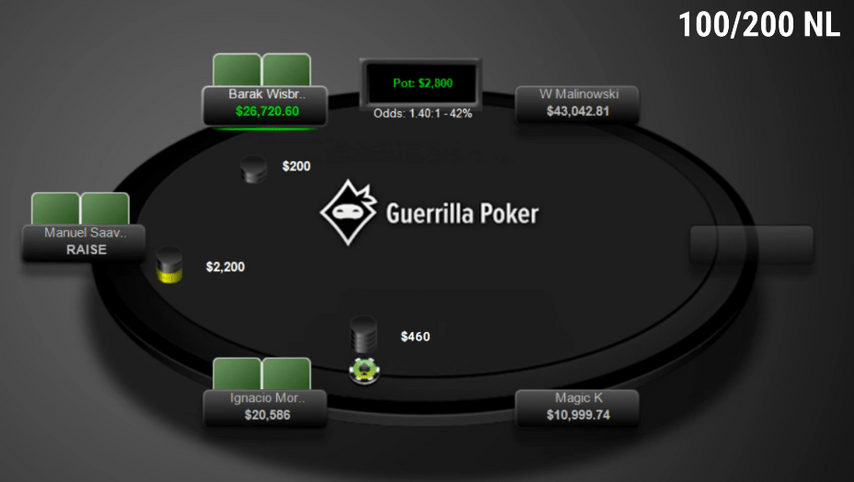
The first hand was played on the GG Poker network at $100/$200. Ignacio raises from the button and gets 3-bet from Manuel. The 3-bet over the raise was for about 5x. The solver will accept any sizing that falls within the range of four to five times. What is the difference between them for the player on the button? If Villain raises with a smaller sizing, we can call wider. Against a 5x reraise, we suddenly have to fold some pocket pairs and suited connectors, but we have the opportunity to make a shoving range. It turns out that slightly different 3-bet sizings lead to markedly different strategies. Personally, I think that if the player in the small blind has a calling range, the 3-bet should aim for five times, but if he only reraises or folds, four times the sizing makes more sense. The logic here is that the 5x range is more polarized and benefits from fold equity, while the 4x range is more mixed and value-biased – we 3-bet hands that have more equity and don’t mind getting more calls. However, these are just my thoughts. Either way, both sizings are fine.
In response to a 3-bet, the button 4-bets for $4,600. The small blind calls. Let's try to imagine the button's range at this moment. There will be AA-JJ, AK for value, and a number of bluffs that come from off-suited broadway hands and suited hands from the bottom of the calling range.
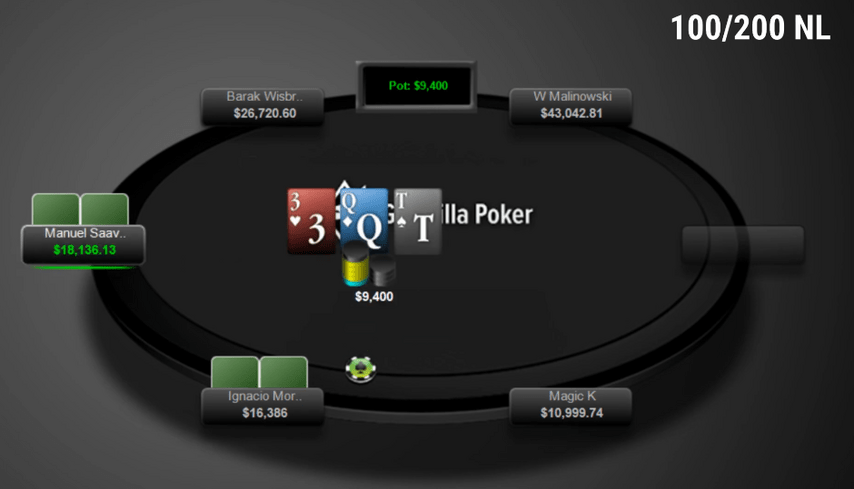
On the flop, Manuel checks and Ignacio bets a very small continuation bet, $1,460. Before we continue, let's talk about the dynamics on this flop, because it's a very interesting texture.
As soon as someone 4-bets at the table, the key combination around which the game unfolds is . On our texture that's two overcards plus a gutshot, which is a combination with decent equity. So a player out of position on this flop can check-raise very aggressively to prevent from realizing equity, and a player in position is not required to bet with all his and can check them with some frequency. If we look at the computer simulation as we build it, we can see that the 4bettor c-bets only part , and his opponent check-raises only part of his continuation range. As soon as the c-bet percentage increases with , the check-raise percentage also increases, and the increasing check-raise percentage makes you check more often with , and so on.
I don't think in these positions on the flop The button has the right to c-bet with the entire range, although this is quite possible in other positions. However, Ignacio's sizing hints at the fact that he himself feels entitled to c-bet a very wide range. Perhaps he is sure that the bulk of his bluffs are broadways, which also hit the flop well, and he simply does not have any weak hands left. But for the GTO, I don't think we have a betting range.
Manuel goes all-in in response.
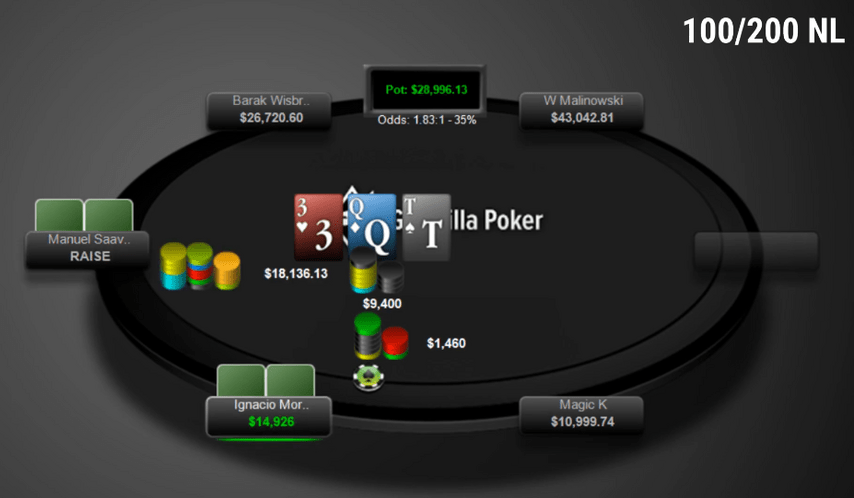
As I already said, this is a fairly standard reaction on this texture, directed against the implementation of equity with .
Ignacio calls.
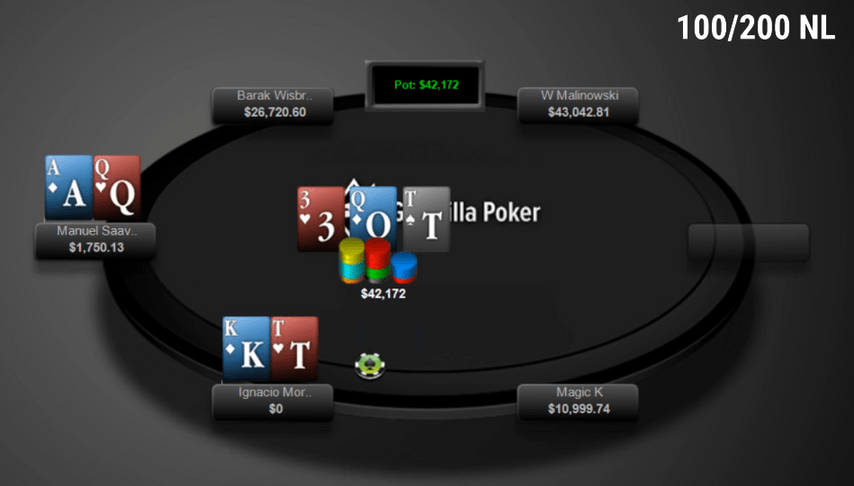
Manuel has a perfect play with AQo: it's always a 3-bet and a 4-bet call, and check-raising on the flop is a standard part of the overall strategy on that texture. Ignacio's 4-bet with KTo seems to be one of the bluffs with the bottom of the calling range, although I think this hand is a bit weak and can't be called against a 5x reraise. The border should be around KJo. However, Ignacio probably knows this situation better than me, or was guided by potential exploits.
It's pretty frustrating to c-bet KTo and get check-raised all-in – we're facing a tough decision. What can we rely on to understand the situation?
When the computer bets all-in, it tends to make some part of our range indifferent to the choice between calling and folding. On this texture, he should aim at . Exactly – the key combination around which the battle scenario unfolds. We must ask ourselves: what is better to have in this spot, or ? It is obvious that with a lady we always call, and with we will fold. Probably the solution should also be folded. We hit and and other draws that are in a shoving range but don't hit too convincingly. In general, this is a rather unpleasant and borderline situation. If we had c-bet a little more, the call would have been more obvious. And with our sizing, the solver, I think, will offer a mixed strategy – which means we either use a randomizer or make a decision on the opponent.
Here's how the hand ended:
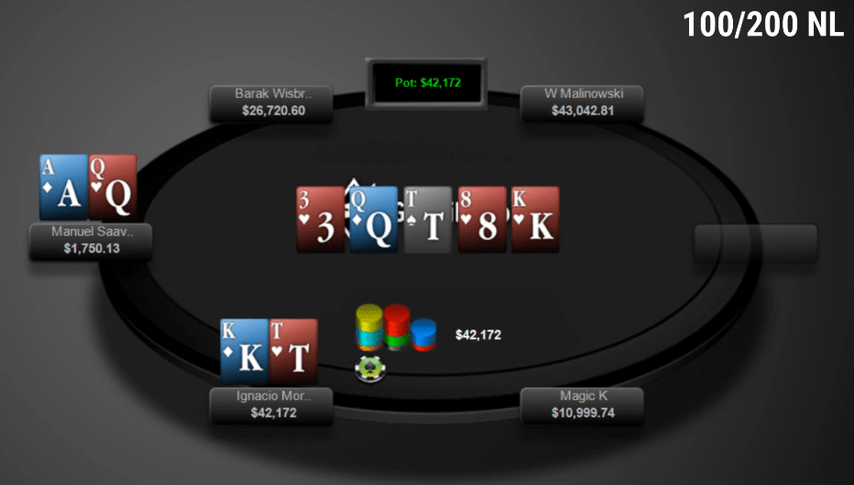
Now let's check how close to the truth were my reasoning.
My 4-betting range:
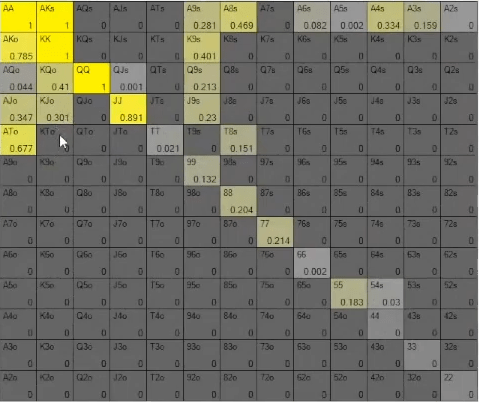
It does not include KTo – bluffs start with KJo and ATo. However, the difference in expectation between them is so small that it is unlikely that switching from one combo to another will noticeably affect your win rate.
Let's watch the c-bet.
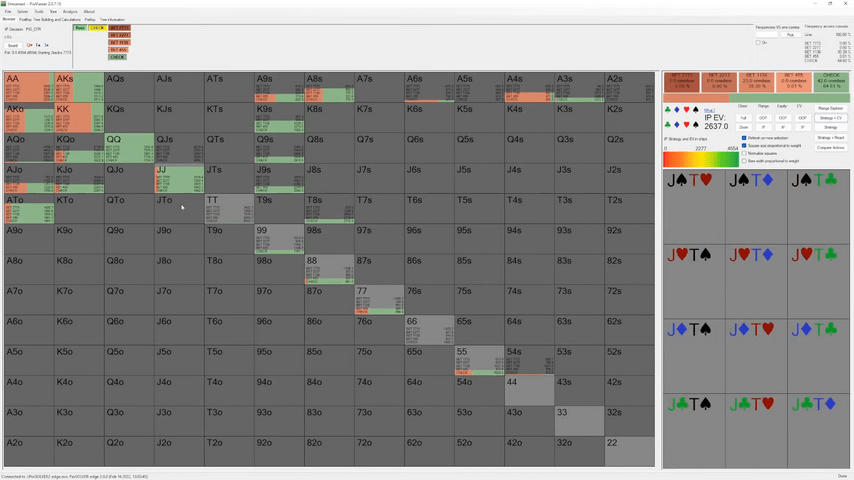
Well, it looks like I was right: we can't continuation bet with the whole range, so the solver rejects the smallest sizing. His main sizing is a quarter of a pot, and according to this strategy, they are played with a mix between a continuation bet and a check.
Small Blind vs Small CBet:
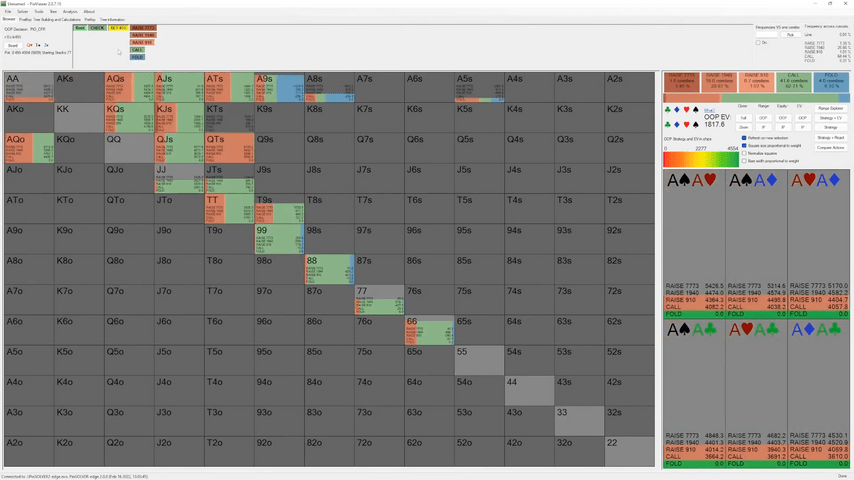
The solver does not bet all-ins, preferring to make a small raise. If he shoves, the button can call with both , and . But this is not a very reliable estimate, since the solver does not have pushes for a small continuation bet. And what does it matter? In the hand, there was a continuation bet of about 10%, but the field does not play like that, and we will not waste time on a detailed analysis of a particular case. It is much more useful to know what to do against standard lines.
A continuation bet should put pressure on some parts of the Villain's range. Against a 10% bet, you can easily press a call even with . 25% looks more interesting. And in response to such a continuation bet, the small blind already has shoves.
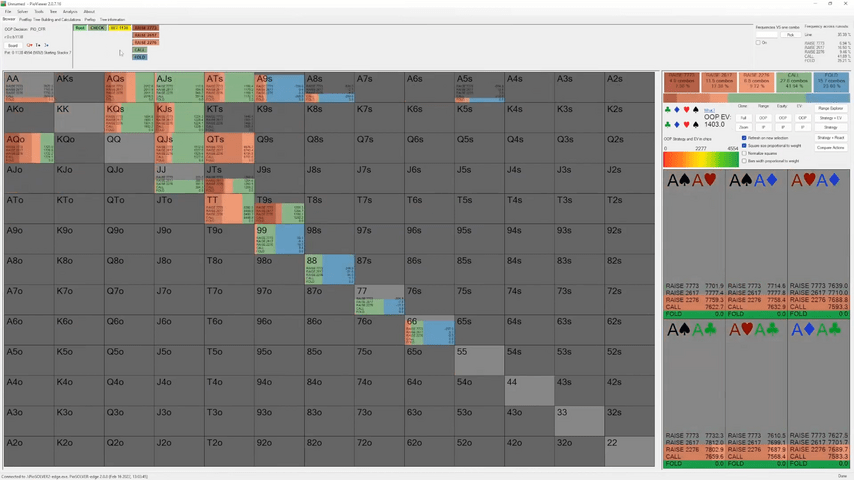
is one of the hands that likes to go all-in right away. Against such an all-in, the solver mixes calls and folds with AKo and ATo.
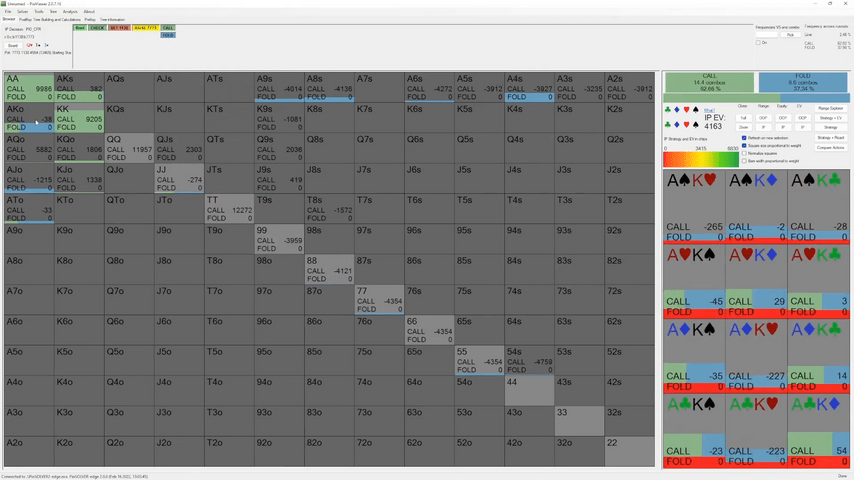
Obviously a queen should call. – our main draw, it should be indifferent to the choice, it should be folded. Pairing a ten is not so clear-cut, but in the computer world, these hands have about zero expectations.
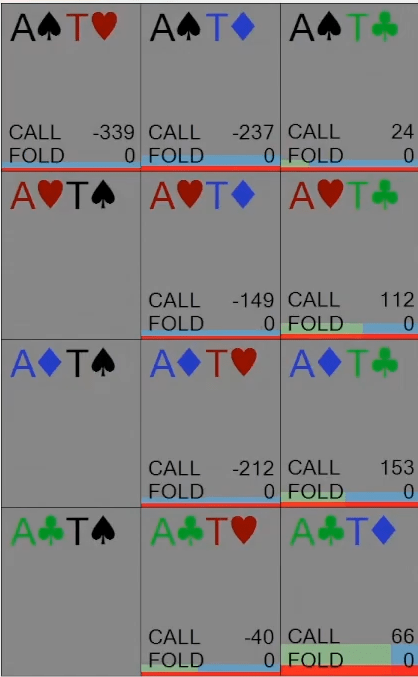
In general, the key to the decision is to see what combination makes the opponent's strategy indifferent and then compare our hand with it. And then you can deviate from the computer decision based on your thoughts about the opponent.
In the next hand, which is played on $500/$1,000 tables with a $200 ante at GG Poker, which is very, very expensive, the button raises with a 41bb stack and Viktor Malinovsky calls in the BB.
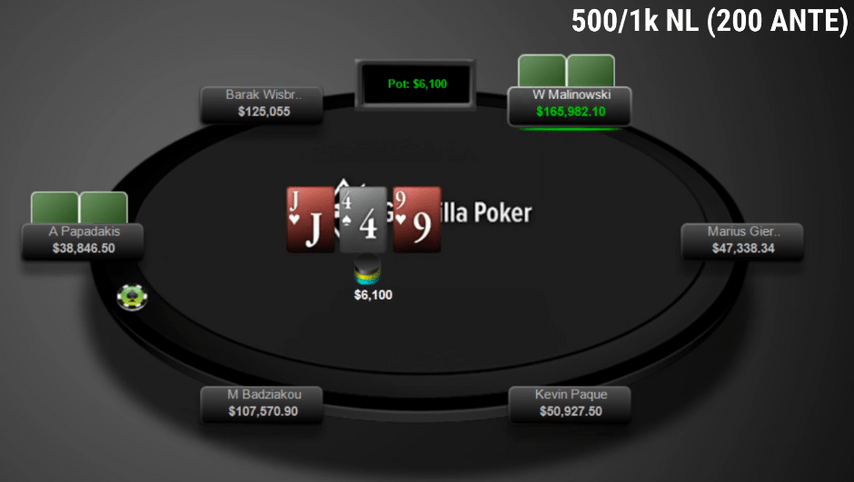
On the flop, both players check. It's actually a pretty good button texture, and I wouldn't be surprised if he can continue very wide.
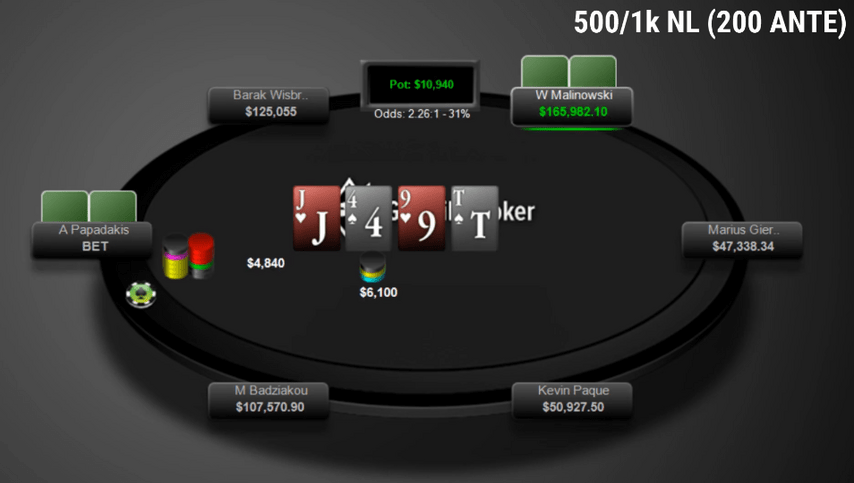
On the turn, Victor checks and his opponent bets big. The value border, in my opinion, runs along . Bluffs can be scored a lot and for every taste.
Victor calls. He can bluff with quite a variety of hands. Let's ask ourselves the same question as in the previous example: what hands in our range are indifferent to the choice between calling and folding? Obviously, if Villain can bet for value with , we always call with , A without additional outs, they are likely to be indifferent. Any pair with a draw is likely to have a positive expectation.
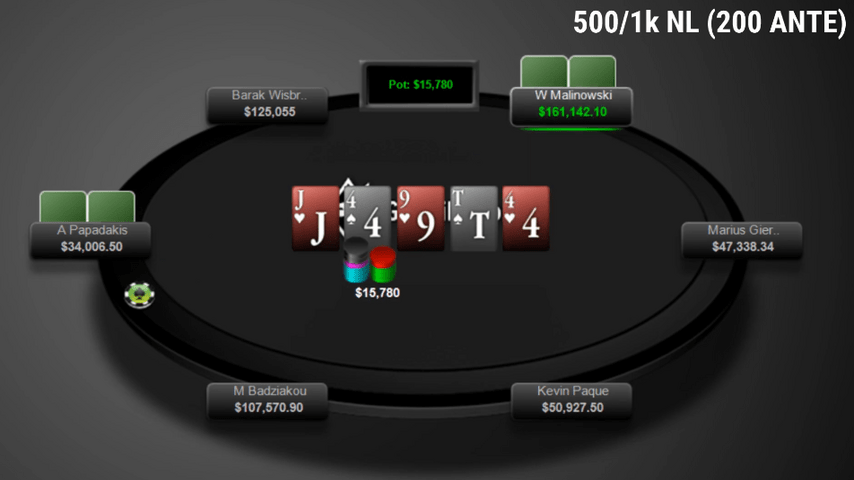
On the river comes another four, and the flush gets there. The button should not have fours, and the BB cannot have many of them either. BB has few flushes – he can have with one more heart, for example. The button has more of them – in his range there are generally any flushes.
After a check from Victor, the button overbets and goes all-in for about double the pot.
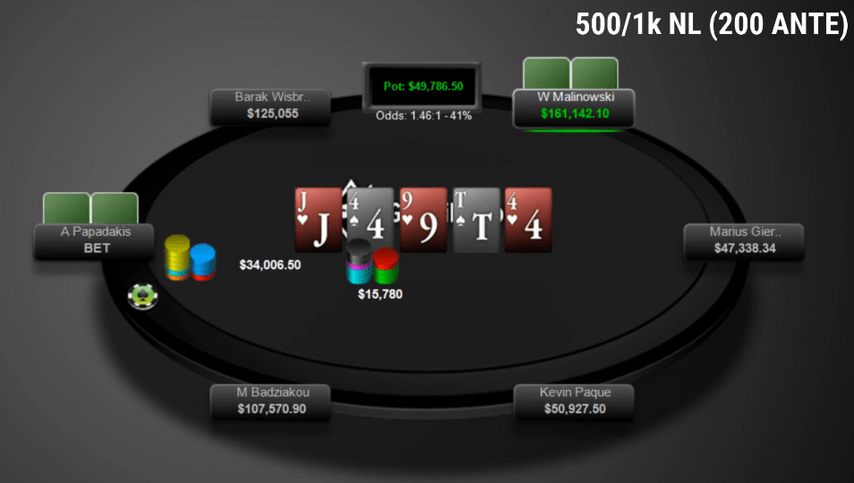
I always try to define the edge of the value range first. Obviously, this can have a full house or a flush. What about straight or trips? If the BB has very few flushes, an all-in with a straight is also possible. You can come up with a push with , but the button does not have , since he doesn't bet the turn with this hand.
Obviously, the BB should call with all flushes. I would say with straights too, but he doesn't have any straights on that line, so there's nothing to talk about here. Anything weaker than a flush is a bluff catcher, which is decided by the presence of blockers and anti-blockers.
BB thinks for a long time and calls.
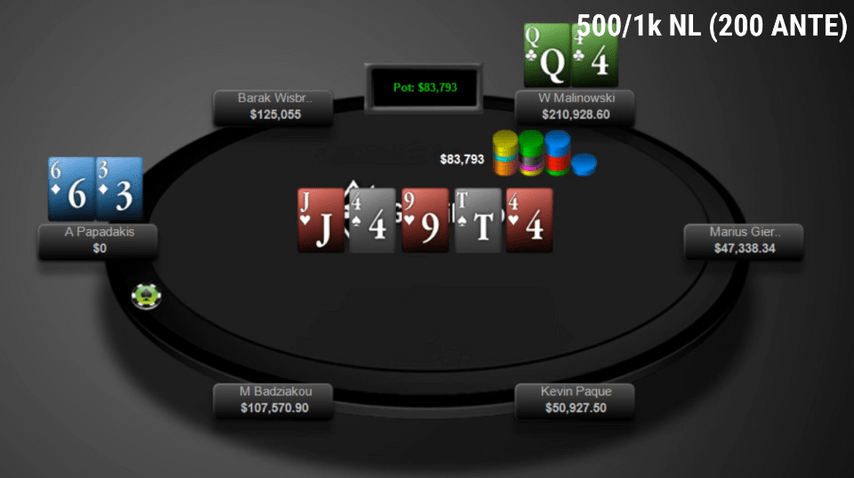
I like the BB line. Good preflop and flop, normal call on the turn with a pair and a draw. We hit trips on the river, but it's still only a bluff catcher, unless our opponent is crazy enough to get all-in here with aces (which is hardly correct). Of course, if we think he is shoving , this is an instacall, but the combination of checking the flop and overbet shoving the river for aces looks very strange. In general, this is not a trivial call, and it is not without reason that Victor thought so long before deciding to make it.
The button showed a rather original hand. Missed the board completely and checked the flop, and on the turn, when the BB checked a second time, decide to attack the weakness. And on the river he played an expensive bluff – we must give him his due, a very bold and powerful line! Of course, when you do lines like that, you have to be more or less balanced, otherwise it will be too easy to open you up. I don't know anything about this player, but in a vacuum, an aggressive line against a double-check is never too bad.








